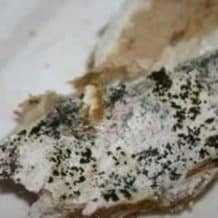Symptoms of Toxic Mold Illness

Human bodies can tolerate molds and mycotoxins in small quantities, but common molds are a very common allergen. Because exposure to mycotoxins is relatively rare, allergic effects are more common than toxic effects, but flooding such as is caused by hurricanes or other storms have led to some serious dangers from Mycotoxin, or what is commonly called Black Mold or Toxic Mold.
Image: Mold toxins can cause flu-like symptoms, especially in children and people with allergies.
Stachybotrys mold spores are toxic because they produce a poisonous substance called mycotoxin. When these spores are inhaled they can cause many unpleasant, and even very serious, symptoms and conditions.
The health effects of mycotoxin exposure are different from allergic reactions to mold spores. Toxic effects can include flu-like symptoms, respiratory problems, headaches, memory and cognitive problems, and skin irritation.
Another and more dangerous health threat from mold exposure is systemic fungal infection. Individuals with compromised immune systems, exposed to high levels of mold, or possibly individuals with chronic exposure paired with mycotoxic exposure may become infected. Sinuses and digestic tract infections are most common. Lung and skin infections are also possible.
Systemic fungal infection can be a serious health problem. Alcohol and mycotoxin production may result from the fungal growth, leading to a myriad of symptoms. Sudden food allergies and digestive problems can mislead diagnosis. Treatment can be long-term (many years).
Systemic infection may be of the environmental mold itself, or by other common food-related molds consumed under an weakend immune system. A weakened immune system may also result in other opportunistic infections, for example bacterial infection.
Environmental illnesses can be difficult for healthcare practitioners to diagnose. Because those who are living in houses comntaminated by the mold generally can’t smell the mildewy odor, they tend to be in denial that the problem exists.
MOST COMMON SYMPTOMS OF TOXIC MOLD EXPOSURE
Symptoms of black mold or toxic mold exposure may not seem life threatening at the onset. Over time more serious illnesses may develop.
People with chronic illnesses, such as obstructive lung disease, may develop mold infections in their lungs. Mycotoxin poisoning by the Stachybotrys fungus is called stachybotryotoxicosis.
A few of the possible symptoms of mold allergy:
Nasal Congestion
Irritation of the eyes
Inflammation of the sinuses
Irritation of the skin
Breathlessness
Headache
Runny nose
Fatigue
Cough
Sore throat
Hoarseness
MORE SERIOUS SYMPTOMS
You may develop a skin rash.
Flu like symptoms such as nasal stuffiness, fever, headaches, abdominal pain and diarrhea may occur.
Can induce serious respiratory problems.
May cause wheezing or shortness or breath.
Inflammation of the ear
Bleeding Lungs
Nose Bleeds
Memory Loss
Arthralgia ( Pain in the joints without swelling )
Below Are A Few News Items About this Problem
Asthma from Mold Exposure in Infancy. “Recent studies have confirmed what scientists have suspected for years: that asthma is an immune system reaction to dust, pollution and other allergens [e.g., airborne mold spores] in the environment, which trigger spasms and tightening of the airways of some people who also have a genetic predisposition. Now they’re zeroing in on the genetic vulnerability. The new thinking is that asthma isn’t simply a matter of having the wrong genes. Instead, at some point in early childhood, or possibly in the womb, an event takes place that turns a person into a lifetime asthmatic. Scientists think the fetus or infant is somehow exposed to a critical dose of pollutants that cause the immune system to overreact, permanently narrowing the airways and making them more sensitive to irritants. It might be possible to inoculate children against the condition before this even occurs, preventing asthma entirely.”—from “Waiting to Inhale,” NEWSWEEK, March 14, 2005.
“Fungi are also being recognized more frequently as a factor in chronic sinusitis, and the importance of fungi in the pathogenesis of chronic sinusitis is a subject of increasing research interest.”—“A Practical Approach to the Patient with Sinusitis” on Medscape, November, 2005.
Deadly Tsunami and Hurricane Fungal Infections. Survivors of the Asian tsunami could be at risk of the deadly fungal infection Mucormycosis, Australian researchers said on Jan. 28, 2005. Doctors at Sydney’s St George Hospital treated the Mucormycosis infection in an Australian man who was injured in the disaster. Doctors fear it could be the first case of many. This fungal disease is caused by the Mucor mold species, which is a very common mold species that readily grows in water-damaged buildings worldwide, and which is commonly found in the soil and in decaying vegetation. Mucormycosis affects the sinuses, brain, lungs, skin and kidneys. People with immune disorders are more susceptible to the infection.
Coccidioides immitis mold [the cause of widespread “Valley Fever” in the southwestern USA desert cities] is on the U.S. Dept. of Human Service list of biological agents and toxins that have the potential to pose a severe threat to public health and safety, and that can potentially be utilized by terrorists to infect and kill Americans.
Next : Who Is Most Vulnerable to Illness from Molds
read more






